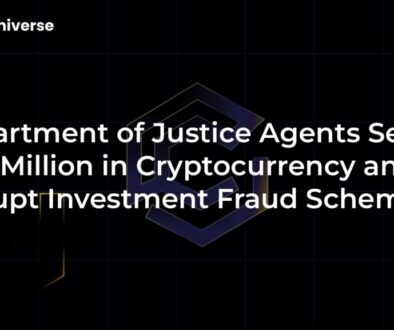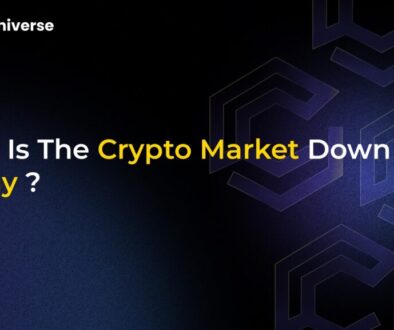Ripple and SEC Seek Dissolution of XRP Injunction and Release of $125M in Escrow

Ripple and SEC Seek Dissolution of XRP Injunction and Release of $125M in Escrow
After a protracted legal battle spanning nearly four years, a significant turning point has emerged in the high-profile case between Ripple Labs and the U.S. Securities and Exchange Commission (SEC). Both parties have jointly approached a Manhattan federal court, requesting the dissolution of an existing injunction and the release of $125 million currently held in escrow.
This proposed resolution involves Ripple paying a $50 million civil penalty to the SEC, with the remaining $75 million from the escrowed funds to be returned to the company. This development marks a substantial step toward concluding a dispute that began in 2020, when the SEC accused Ripple of unlawfully raising $1.3 billion through the sale of XRP as unregistered securities. While Ripple consistently denied any wrongdoing, it secured a partial victory in 2023 when the court ruled that certain XRP sales did not violate securities laws. Pending approval from U.S. District Judge Analisa Torres, this settlement could redefine the future of Ripple, XRP, and potentially, the broader crypto regulatory landscape in the United States.
A New Chapter: Unpacking the Proposed Settlement Terms
The core of the proposed settlement hinges on a clear financial arrangement. Ripple will pay a $50 million civil penalty to the SEC. This penalty is authorized under Section 20(d) of the Securities Act, indicating the SEC’s legal basis for the fine despite the partial court victory for Ripple. Crucially, the remaining $75 million from the $125 million initially held in escrow will be returned directly to Ripple.
This agreement, once approved by the court, will lift the existing injunction against Ripple, effectively removing a significant regulatory cloud that has hovered over the company’s operations for years. This paves the way for Ripple to resume its sales of XRP to institutional investors legally, a key aspect of its business model that was severely constrained during the lawsuit. The resolution not only provides financial clarity for Ripple but also signifies a potential shift in the regulatory environment, setting a precedent for how similar digital asset cases might be approached in the future.
XRP’s Horizon: Market Performance and Ripple’s Strategic Expansion
The Ripple-SEC lawsuit has undeniably cast a long shadow over XRP’s market performance since 2020. The uncertainty surrounding its regulatory status has often suppressed its price and limited its adoption in certain markets. However, a favorable resolution, as indicated by this proposed settlement, could usher in a new era of bullish momentum for XRP.
Market analysts have offered various price predictions following the lawsuit’s conclusion. Some anticipate XRP could revisit previous highs, potentially testing ranges between $2.80 and $3.00, or even surpassing $5 in the coming years, depending on broader market conditions and renewed investor confidence. The removal of the regulatory overhang is expected to unlock XRP’s full potential, attracting more institutional interest and utility.
Beyond XRP’s market dynamics, the settlement allows Ripple to aggressively refocus and expand its operations, particularly in the U.S. The company has expressed clear intentions to:
- Re-engage with and enhance partnerships with U.S. banks.
- Streamline cross-border transactions using its blockchain-based payment solutions.
- Accelerate its growth in crypto payments within the U.S. market.
Ripple’s CEO has explicitly stated that U.S. growth is now back on track. This resolution is not just a win for Ripple but also a signal to other fintech firms and digital asset companies that the U.S. market, despite its past regulatory complexities, is becoming more accessible and predictable.
Shifting Tides: The SEC’s Evolving Stance on Crypto Regulation
The proposed settlement in the Ripple case also shines a light on the broader, evolving landscape of crypto regulation in the U.S. The SEC’s approach to digital assets has seen notable shifts, particularly with changes in leadership and policy directives. Under former Chairman Gary Gensler, the SEC adopted an aggressive enforcement stance, initiating a significant number of crypto-related cases and imposing billions in penalties.
However, recent developments suggest a potential softening or at least a more nuanced approach. The establishment of a new SEC Crypto Task Force, coupled with various executive orders and legislative discussions, indicates a move toward clearer regulatory frameworks rather than solely relying on enforcement by litigation. The current administration is actively revising regulatory frameworks, influencing market practices, and engaging directly with digital asset projects to understand their complexities better.
These changes hold profound implications for fintech and digital asset firms. A clearer regulatory environment could foster innovation, encourage investment, and facilitate the deeper integration of blockchain technology into the traditional financial ecosystem. While some uncertainty persists due to the SEC’s mixed record in court and ongoing debates about the scope of its regulatory authority, the Ripple settlement suggests a potential pivot towards a more constructive, rather than purely adversarial, relationship between regulators and the crypto industry.
What’s Next: A Landmark Moment for Crypto
The joint request by Ripple and the SEC to dissolve the XRP injunction and release the escrowed funds marks a pivotal moment in the history of cryptocurrency regulation. Should U.S. District Judge Analisa Torres approve the proposed settlement, it will not only bring closure to a long and arduous legal battle for Ripple but also set a crucial precedent for the classification and regulation of digital assets in the United States.
This resolution could empower Ripple to fully realize its vision for global payments and significantly impact XRP’s market trajectory. More broadly, it signals a potential shift in the SEC’s strategy, moving towards more defined regulatory pathways for the burgeoning digital asset industry. As the crypto space continues to mature, such landmark settlements are vital steps toward achieving the regulatory clarity necessary for widespread adoption and sustainable innovation.


